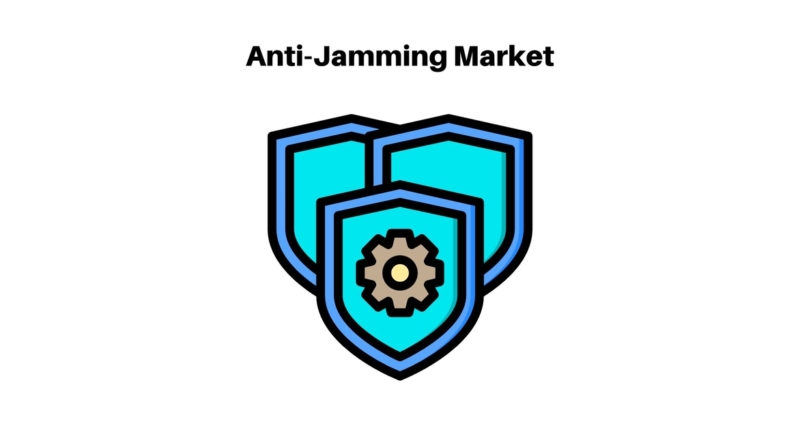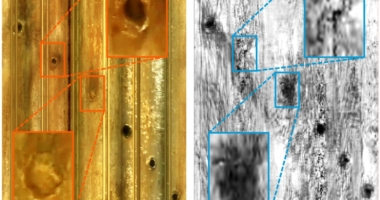Anti-jamming technology is becoming increasingly important due to the growing cyber threat landscape. GPS signals are particularly vulnerable to jamming or spoofing attacks, which is why anti-jamming measures are in high demand. The anti-jamming market is an emerging sector that provides solutions for combating jamming and interference in communication and navigation systems. While anti-jamming technology offers numerous opportunities for growth and innovation, there are also significant challenges. These include the high cost of implementation, a lack of awareness among end-users, limited range, complexity, and compatibility issues. The market is segmented by receiver type, anti-jamming technique, and application. Cobham, NovAtel, and InfiniDome are some of the key players in the market. Anti-jamming technologies have various uses, from military and defense applications to aerospace and aviation, maritime transportation systems, automotive design, and commercial communication networks. Some popular technologies include frequency hopping, spread spectrum, beamforming, and null steering.
Anti-Jamming Market to Reach USD 9.96 Bn by 2033 with a CAGR of 7.9%
The Anti-Jamming Market is expected to grow significantly, reaching USD 9.96 billion by 2033 with a Compound Annual Growth Rate (CAGR) of 7.9% from 2023-2033. As per a report published on 11Press, the Anti-Jamming Market includes products and technologies designed to prevent or mitigate electronic jamming, which is any intentional or accidental interference with radio signals. The market is driven by the increasing reliance on wireless communication technologies across several industries like aerospace, defense, and telecommunications.
To ensure secure and reliable communications in such environments, anti-jamming technologies are becoming essential. Key technologies used in the anti-jamming market include beamforming, frequency hopping, and directional antennas that mitigate the effects of jamming by enabling signals to be transmitted and received even when interference is present.
Key Takeaways
-
The rising use of GPS technology in various industries such as military, aerospace, and transportation is fueling the rapid expansion of the Anti-Jamming market.
-
The demand for Anti-Jamming systems is driven by the need for secure communication systems that are not vulnerable to interference or jamming.
-
The Asia-Pacific region is expected to experience significant growth in the Anti-Jamming market due to increasing defense budgets and rising application of GPS technology across different sectors.
-
The Anti-Jamming market is highly competitive, with several established players offering various solutions for different applications.
-
Military and defense are the leading end-use sectors for Anti-Jamming systems.
-
The top players in the Anti-Jamming market include Raytheon, Rockwell Collins, Novatel, Cobham, and Furuno Electric.
-
The market is witnessing a shift towards software-defined radios, integration of multiple systems into one platform, and application of advanced technologies like artificial intelligence and machine learning to enhance system performance.
-
The COVID-19 pandemic has had an uneven impact on the Anti-Jamming market, with some applications experiencing a decrease in demand while others have seen an uptick due to the need for secure and dependable communication systems in remote and challenging locations.
Anti-Jamming Market Poised for Substantial Growth Globally
The anti-jamming market is a global industry expected to witness significant growth over the coming years. The market can be segmented into various regions including North America, Europe, Asia Pacific, Middle East & Africa, and South America.
Regional Snapshot
-
North America is expected to lead the anti-jamming market due to the presence of major technology providers and the increasing use of GPS technology by military personnel.
-
Europe is projected to be the second-largest market for anti-jamming technology by 2024. The UK, France, and Germany are some of the countries driving market expansion throughout the region.
-
The Asia Pacific region is expected to experience rapid growth in the anti-jamming market due to increasing demand for GPS technology in defense and commercial sectors. Major contributors to this region’s market development include China, Japan, India, and South Korea.
-
The Middle East and Africa region is expected to witness strong growth in the anti-jamming market, with countries such as Saudi Arabia, UAE, and Israel announcing significant investments in defense projects.
-
South America is projected to experience moderate growth in the anti-jamming market, with Brazil and Argentina as major drivers of regional expansion.
Drivers
The increasing need for secure communications that are free from jamming and other types of interference is driving the anti-jamming market’s growth. Governments worldwide are increasing their military spending, and anti-jamming technology is a crucial component of military communications systems. The recent advancements in anti-jamming technology have created new business opportunities for providers of this service, such as more sophisticated electronic warfare systems.
Enquire Here & Query for the report
For more information on the anti-jamming market, interested parties can enquire and submit queries on the https://marketresearch.biz/report/anti-jamming-market/#inquiry website.
Click Here To Access Sample Pages Of This Report
Access the sample pages of the anti-jamming market report to learn more about this burgeoning industry: https://marketresearch.biz/report/anti-jamming-market/request-sample/
Anti-Jamming Technology in High Demand Due to Cyber Threats
Anti-jamming technology is in high demand due to the rising number of cyber threats. Cyber attackers use jamming techniques to disrupt communications and cause havoc, which makes anti-jamming measures essential. Furthermore, the growing use of GPS in navigation, transportation, and logistics applications has made GPS signals vulnerable to jamming or spoofing attacks, further increasing the necessity for anti-jamming solutions.
Restraints
The anti-jamming market, which provides solutions for combating jamming and interference in communication and navigation systems, faces certain limitations that could potentially hinder its growth and development potential.
-
High Cost: Developing and implementing anti-jamming technologies can be expensive, which may pose a significant barrier for small and medium-sized enterprises (SMEs) as well as some larger organizations.
-
Lack of Awareness: Many end-users are unaware of the risks associated with jamming and the availability of anti-jamming solutions. This lack of comprehension could limit adoption rates for anti-jamming technologies.
-
Limited Range: Some anti-jamming solutions may have a limited range, meaning they may not be effective in all circumstances. For example, some solutions are only effective against certain types of jamming signals or within certain ranges.
-
Complexity: Adopting and supporting certain anti-jamming solutions can present a significant obstacle for organizations without the technical know-how. This complexity could prove detrimental if organizations lack the resources or expertise to manage such projects effectively.
-
Compatibility: Some anti-jamming solutions may not be compatible with current communication and navigation systems, leading to extra expenses and delays when deploying these technologies.
Opportunities
The anti-jamming market presents numerous opportunities for growth and innovation, particularly in military and defense applications. Anti-jamming technology is essential in shielding GPS and other wireless communication systems from being jammed by adversaries. As cyber-attacks and electronic warfare become more frequent threats, demand for anti-jamming solutions in military and defense applications is expected to grow.
As the industry grows, providers of anti-jamming solutions must focus on mitigating the restraints facing the market to capitalize on the opportunities presented by the growing demand for secure and reliable communication systems.
Anti-jamming technology is critical for industries such as aviation, transportation, and telecommunication. GPS signals, which these industries depend on for navigation, communication, and timing purposes, are vulnerable to interference and jamming, leading to safety and security concerns. Anti-jamming solutions help to prevent GPS jamming and ensure the dependability and safety of these systems.
Autonomous vehicles are also vulnerable to interference and jamming, which poses safety risks. Anti-jamming solutions help to eliminate this safety threat and guarantee the safety of these vehicles.
However, there are challenges that organizations face when implementing anti-jamming technologies. The threat landscape is continuously changing, making it challenging to keep up with emerging threats. Anti-jamming technologies tend to be expensive, making it difficult for smaller organizations or those with limited budgets to justify investing in them. Anti-jamming processes also require specialized knowledge and expertise, making them challenging for organizations without sufficient resources to implement effectively.
The anti-jamming market can be segmented by receiver type, anti-jamming technique, and application. Receiver types include military, government, and commercial transportation. Anti-jamming techniques include nulling technique, civilian techniques, and beam steering technique. Applications include targeting, flight control, casualty evacuation, surveillance and reconnaissance, and position, navigation, and timing.
Some of the key players in the anti-jamming market include Cobham plc, NovAtel, Inc., InfiniDome Ltd., Harris Corporation, BAE Systems plc, u-blox Holding AG, Rockwell Collins, Inc., and Raytheon Company.
In conclusion, anti-jamming technology plays a crucial role in various industries, including aviation, transportation, and telecommunication. Although there are challenges in implementing anti-jamming technologies, it is essential to stay up to date with emerging threats to remain effective. The anti-jamming market offers significant opportunities for growth and innovation to meet the growing demand for secure and dependable communication and navigation systems.
The anti-jamming market utilizes various technologies and solutions to safeguard communication systems and equipment from malicious attacks or natural phenomena like solar flares. Some of the key technologies used in this space include encryption methods, smart directional receivers (SDRs), and cybersecurity features. Encryption methods are crucial in ensuring communication security, especially in military and defense applications. SDRs are becoming more commonplace in this market due to their flexibility and adaptability in changing jamming environments. Cybersecurity features are increasingly being integrated into anti-jamming solutions to guard against hacking and other attacks. Additionally, companies like QinetiQ are developing solutions based on quantum key distribution for ultrasecure communications that are immune to jamming attacks. As the threat landscape is constantly evolving, the anti-jamming market continues to develop new technologies to address emerging threats.
Anti-jamming technologies, such as frequency hopping, spread spectrum, beamforming, and null steering, have a variety of applications. They can be used in military and defense, aerospace and aviation, maritime transportation systems, automotive design, and commercial communication networks. For more information or to contact a market research representative, interested parties can reach out to Mr. Lawrence John at Marketresearch.Biz (Powered By Prudour Pvt. Ltd.) via phone at +1 (347) 796-4335 or by email at lawrence@marketresearch.biz.
Don’t miss interesting posts on Famousbio









